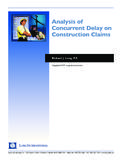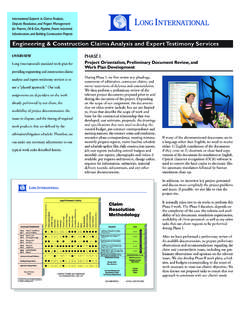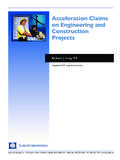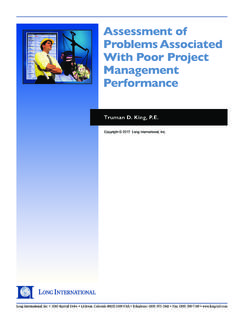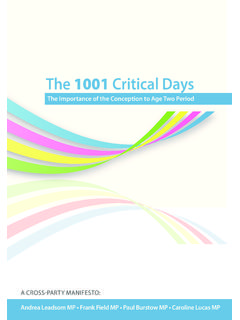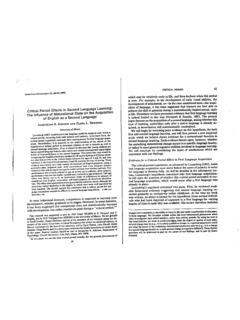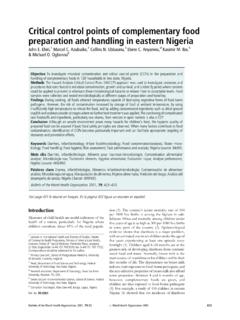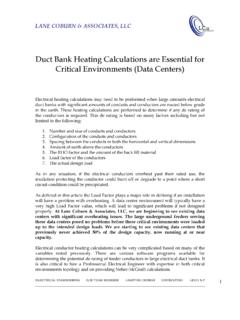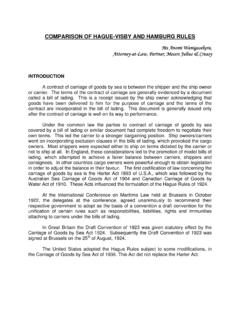Transcription of Scott M. Francis, P.E., PSP - Long International
1 LONG Skytrail DriveLittleton, Colorado 80123 -1566 USAT elephone: (303) 972 - 2443 Fax: (303) 200 -7180 Long International , Inc. Scott M. Francis, , PSPC ontemporaneous Period Schedule Analysis Methodology Scott M. Francis, , PSP Table of Contents 1. INTRODUCTION .. 1 2. SELECTION OF A SCHEDULE ANALYSIS METHODOLOGY .. 1 3. BECOME FAMILIAR WITH THE PROJECT AND RELEVANT DOCUMENTS .. 3 4. PERFORM A HIGH LEVEL REVIEW OF THE AVAILABLE PROJECT SCHEDULES .. 3 5. SELECT SCHEDULE WINDOWS .. 4 6. IDENTIFY THE CRITICAL AND NEAR-CRITICAL PATHS .. 6 VERIFY THE ACTUAL DATES FOR CRITICAL AND NEAR-CRITICAL PATH 6 7. PERFORM A DETAILED REVIEW OF THE SCHEDULES SELECTED FOR THE ANALYSIS .. 7 OPEN-ENDED 8 OVERUSE OF CONSTRAINTS .. 8 USE OF CALENDARS .. 9 8. DETERMINE THE CHANGES MADE BETWEEN THE SCHEDULES SELECTED FOR THE SCHEDULE WINDOWS.
2 9 ACTIVITY AND LOGIC CHANGES .. 9 ACTIVITY DURATION CHANGES .. 10 9. MAKE COPIES OF THE ANALYSIS SCHEDULES AND IMPLEMENT NECESSARY CORRECTIONS .. 10 REVIEW CRITICAL AND NEAR-CRITICAL PATHS .. 11 10. DEVELOP VARIANCE TABLES TO CALCULATE DATE AND DURATION VARIANCES .. 12 11. RESEARCH ACTIVITY IMPACTS AND ALLOCATE RESPONSIBILITY FOR DELAYS .. 13 12. CONCLUSION .. 14 List of Tables Table 1 Sample Schedule Windows .. 5 Table 2 Sample Variance Table .. 12 Table 3 Critical Paths and Originating Activities .. 13 Copyright 2018 Long International , Period Schedule Analysis Methodology 1. INTRODUCTION There are several industry accepted methodologies for forensic schedule analysis. Forensic schedule analyses generally can be classified into two types of methodologies: 1) observational and 2) Observational techniques typically consist of using the contemporaneous schedules with only modifications for obvious and significant errors.
3 Modeled techniques include the addition or subtraction of activities and or logic to model impact The contemporaneous period analysis is a commonly used observational method for evaluating entitlement to a time extension and quantifying compensable delay. The steps for performing a contemporaneous period analysis are summarized below: Become familiar with the project and relevant documents Perform a high level review of the available project schedules Select schedule windows Identify the critical and near-critical paths Perform a detailed review of the schedules selected for the analysis Determine the changes made between the schedules selected for the schedule windows Make copies of the analysis schedules and implement necessary corrections Develop variance tables to calculate date and duration variances Research activity impacts and allocate responsibility for delays Sum and document the results Each of the above steps is further discussed in this article.
4 Prior to performing a schedule analysis, however, the analyst should first consider several key factors to assess whether a contemporaneous period analysis is the most appropriate methodology for the unique project circumstances. 2. SELECTION OF A SCHEDULE ANALYSIS METHODOLOGY When selecting a methodology, it is important for the analyst to consider several key factors. The first factor for consideration is the burden of proof. It is the responsibility of the party asserting the claim to demonstrate that it is entitled to an extension of time and/or compensable delay damages from the other party. If a contractor is requesting an extension of time and/or additional compensation, they are responsible for providing the proof of the delay, and it is not the responsibility of the o wner to perform such an analysis to demonstrate that the contractor is or is 1 AACE International s Recommended Practice 29R-03, Forensic Schedule Analysis, Figure 1, page 12.
5 2 For detailed information regarding Long International s modeled schedule delay analyses, see the article Schedule and Delay Analysis Methodologies , which can be found on our website ( ). Copyright 2018 Long International , Period Schedule Analysis Methodology not entitled to a time extension or to time-related damages. While a modeled windows analysis may be appropriate for the contractor, an as-planned versus as-built or contemporaneous period analysis approach may be more appropriate for the owner. It is also necessary to consider the purpose of the analysis. Several reasons for a forensic analysis include change order development, negotiated settlement, meditation, or arbitration. While a fully detailed modeled schedule analysis may not be necessary for change order development, it may be necessary in the event of arbitration or litigation.
6 The next factor for consideration is the complexity of the project and schedules. A large and complex project with multiple critical and near-critical paths may require a modeled approach, where a more simplified approach may not be sufficient in the event of multiple concurrent delays. Another important factor is the length of the period being analyzed. If the analysis period is short, a modeled windows approach may not be necessary to identify the delays and responsibility. It is also essential to consider the availability and quality of the project schedules. The analyst must consider (but not necessarily use) each available schedule update. Additionally, the quality of the schedules must be evaluated at a high level to determine the usability of the schedules and if, and to what extent, corrections are required.
7 The final consideration, and one that encompasses each of the above factors, is the time and budget available for the analysis. A d etailed modeled analysis may be time consuming and, therefore, expensive to develop. If a schedule analysis must be completed quickly and or budget is limited, a detailed approach is most likely not an option. However, if the analyst is representing the party asserting the claim, discussions should take place with the client to determine the best approach given the time and available resources. Based on the above factors, if a type of as-planned versus as-built analysis is warranted, Long International may utilize an observational, windows-based methodology to analyze the impacts and delays that occurred during the project.
8 This is often referred to as a contemporaneous period analysis. This methodology is a retrospective analysis that uses the project schedule updates to quantify the slippage to a logic path that was critical or became critical during a select period of time. Long International s analysis is consistent with the AACE International Recommended Practice 29R-03, Method Implementation Protocol The analyst must understand that each project and schedule analysis is unique and has its own set of facts, circumstances, obstacles, and challenges. Each of the factors in this Section should be considered prior to making a choice on the selection of the schedule analysis methodology. Copyright 2018 Long International , Period Schedule Analysis Methodology 3.
9 BECOME FAMILIAR WITH THE PROJECT AND RELEVANT DOCUMENTS Prior to performing any analysis, several important steps must be completed. A review of the contract is vital. The analyst must understand the contract documents and note any contract provisions pertaining to a claim situation. It is also important to understand the contract completion dates and if the contract requires any interim completion milestones prior to overall project completion. Additionally, change orders must be evaluated such that the analyst understands how the contract has been modified and if any time extensions have been executed as part of any change orders. During this step of the analysis, Long International becomes familiar with the contract scope of work, parties to the contract, and obtains a high level understanding of the overall project and associated issues causing the dispute.
10 4. PERFORM A HIGH LEVEL REVIEW OF THE AVAILABLE PROJECT SCHEDULES This is a necessary step to determine the availability and content of the contractor s schedule updates. If a schedule analysis is to be performed, the schedules must be available in electronic schedule format. If these files are not available, direction from the client will be necessary on how to proceed. Assuming that electronic schedules have been provided, the analyst should review each schedule file to determine the data dates of the schedules and to determine the frequency of the schedule updates. Typically, contractors are required to provide monthly schedule updates, but additional updates may be available that model certain impacts or what-if scenarios completed by the contractor.

